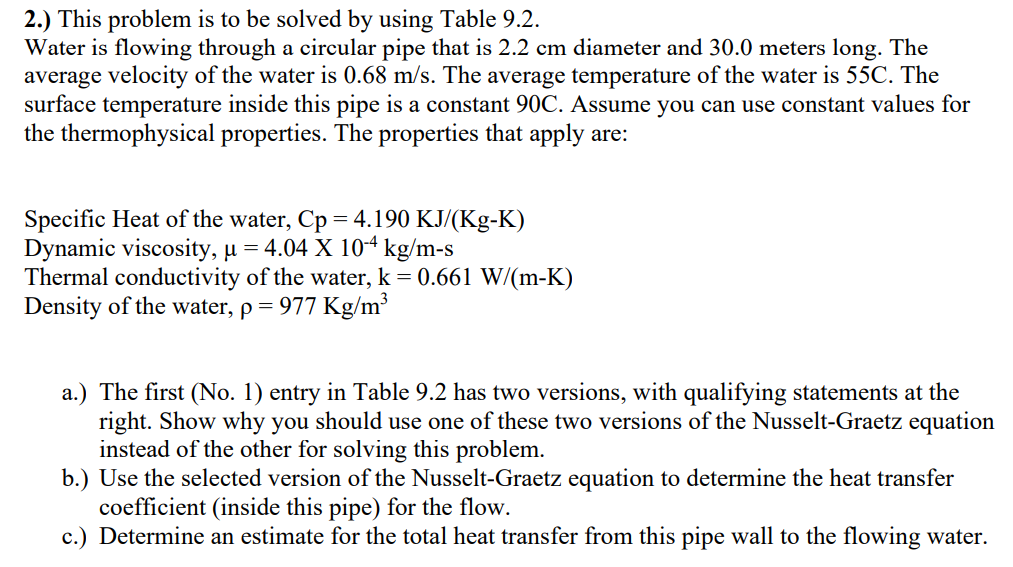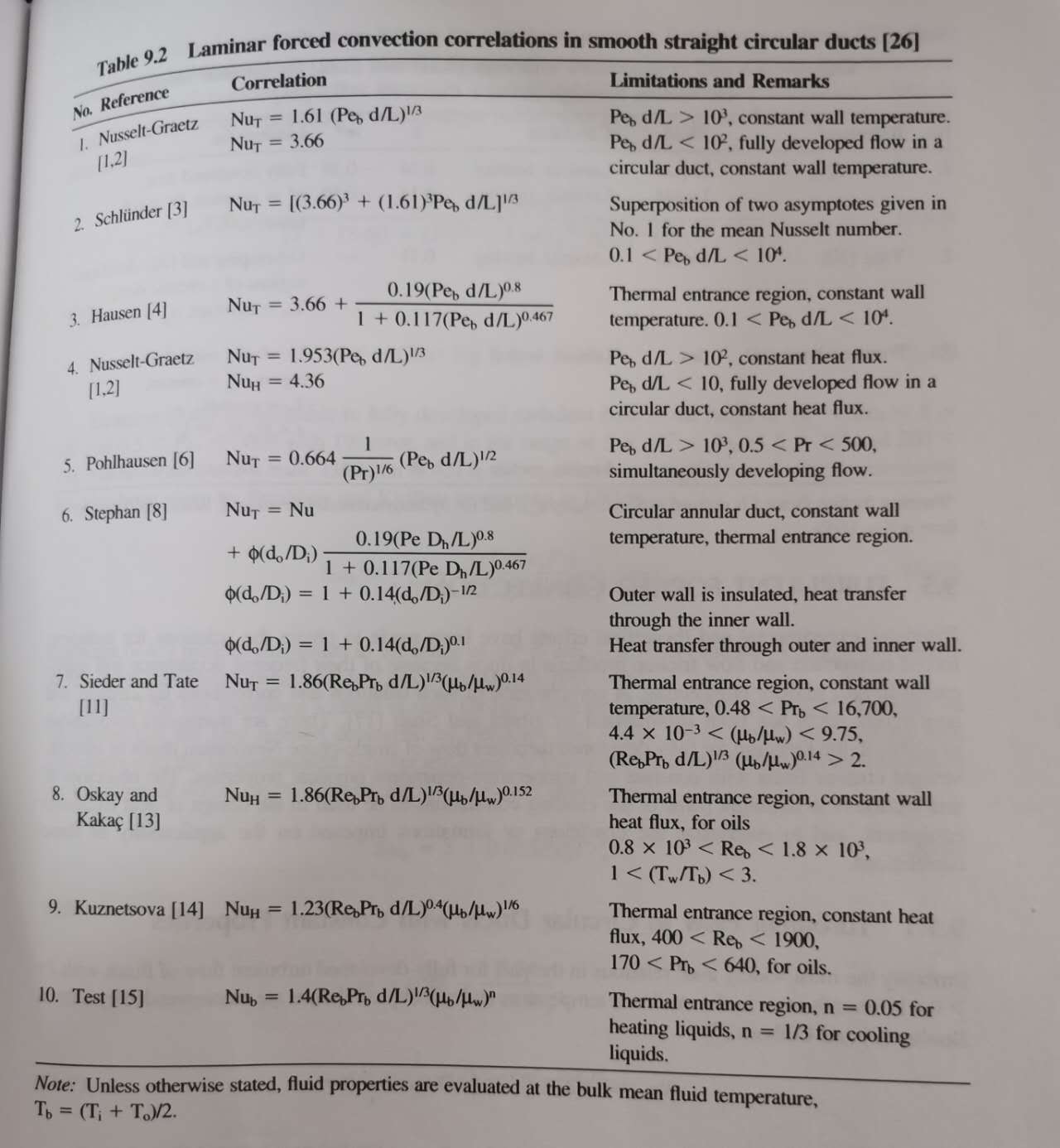Answered step by step
Verified Expert Solution
Question
1 Approved Answer
2.) This problem is to be solved by using Table 9.2. Water is flowing through a circular pipe that is 2.2 cm diameter and


2.) This problem is to be solved by using Table 9.2. Water is flowing through a circular pipe that is 2.2 cm diameter and 30.0 meters long. The average velocity of the water is 0.68 m/s. The average temperature of the water is 55C. The surface temperature inside this pipe is a constant 90C. Assume you can use constant values for the thermophysical properties. The properties that apply are: Specific Heat of the water, Cp = 4.190 KJ/(Kg-K) Dynamic viscosity, = 4.04 X 104 kg/m-s Thermal conductivity of the water, k = 0.661 W/(m-K) Density of the water, p = 977 Kg/m a.) The first (No. 1) entry in Table 9.2 has two versions, with qualifying statements at the right. Show why you should use one of these two versions of the Nusselt-Graetz equation instead of the other for solving this problem. b.) Use the selected version of the Nusselt-Graetz equation to determine the heat transfer coefficient (inside this pipe) for the flow. c.) Determine an estimate for the total heat transfer from this pipe wall to the flowing water. Table 9.2 Laminar forced convection correlations in smooth straight circular ducts [26] No. Reference 1. Nusselt-Graetz [1,2] 2. Schlnder [3] Correlation NUT 1.61 (Pe d/L)1/3 = NUT = 3.66 NUT = [(3.66)3 + (1.61)Pe, d/L]1/3 3. Hausen [4] NUT 3.66 + 4. Nusselt-Graetz [1,2] = 0.19(P d/L) 0.8 1 +0.117(P, d/L)0.467 NUT 1.953(Pe, d/L)1/3 NUH = 4.36 1 5. Pohlhausen [6] NUT = 0.664 (Pr) 1/6 (Pb d/L)1/2 6. Stephan [8] = Nu NUT + (do/D;) (do/Di) = 0.19(Pe D/L) 0.8 10.117(Pe Dh/L) 0.467 1+ 0.14(do/D)-1/2 (do/D;) = 1 + 0.14(do/D;)0.1 7. Sieder and Tate NuT = 1.86(RP d/L) (b/w)0.14 [11] 8. Oskay and Kaka [13] NU = 1.86(R,Prd/L)(/w)0.152 9. Kuznetsova [14] NUH = 1.23(RPb d/L)0.4(ub/w)1/6 10. Test [15] Nub === 1.4(RebPr d/L) (/w)" Limitations and Remarks Pe, d/L> 103, constant wall temperature. Pe, d/L < 10, fully developed flow in a circular duct, constant wall temperature. Superposition of two asymptotes given in No. 1 for the mean Nusselt number. 0.1 < Pe, d/L < 10%. Thermal entrance region, constant wall temperature. 0.1 < P, d/L < 10%. Pe, d/L 102, constant heat flux. Pe, d/L 10, fully developed flow in a circular duct, constant heat flux. Pe, d/L103, 0.5 < Pr < 500, simultaneously developing flow. Circular annular duct, constant wall temperature, thermal entrance region. Outer wall is insulated, heat transfer through the inner wall. Heat transfer through outer and inner wall. Thermal entrance region, constant wall temperature, 0.48 < Pb < 16,700, 4.4 x 10-3 (/w) < 9.75, (RP d/L)/3 (ub/w) 0.14 > 2. Thermal entrance region, constant wall heat flux, for oils 0.8 x 103
Step by Step Solution
There are 3 Steps involved in it
Step: 1
To solve the problem using Table 92 and the provided data well go step by step a Choosing between th...
Get Instant Access to Expert-Tailored Solutions
See step-by-step solutions with expert insights and AI powered tools for academic success
Step: 2

Step: 3

Ace Your Homework with AI
Get the answers you need in no time with our AI-driven, step-by-step assistance
Get Started


